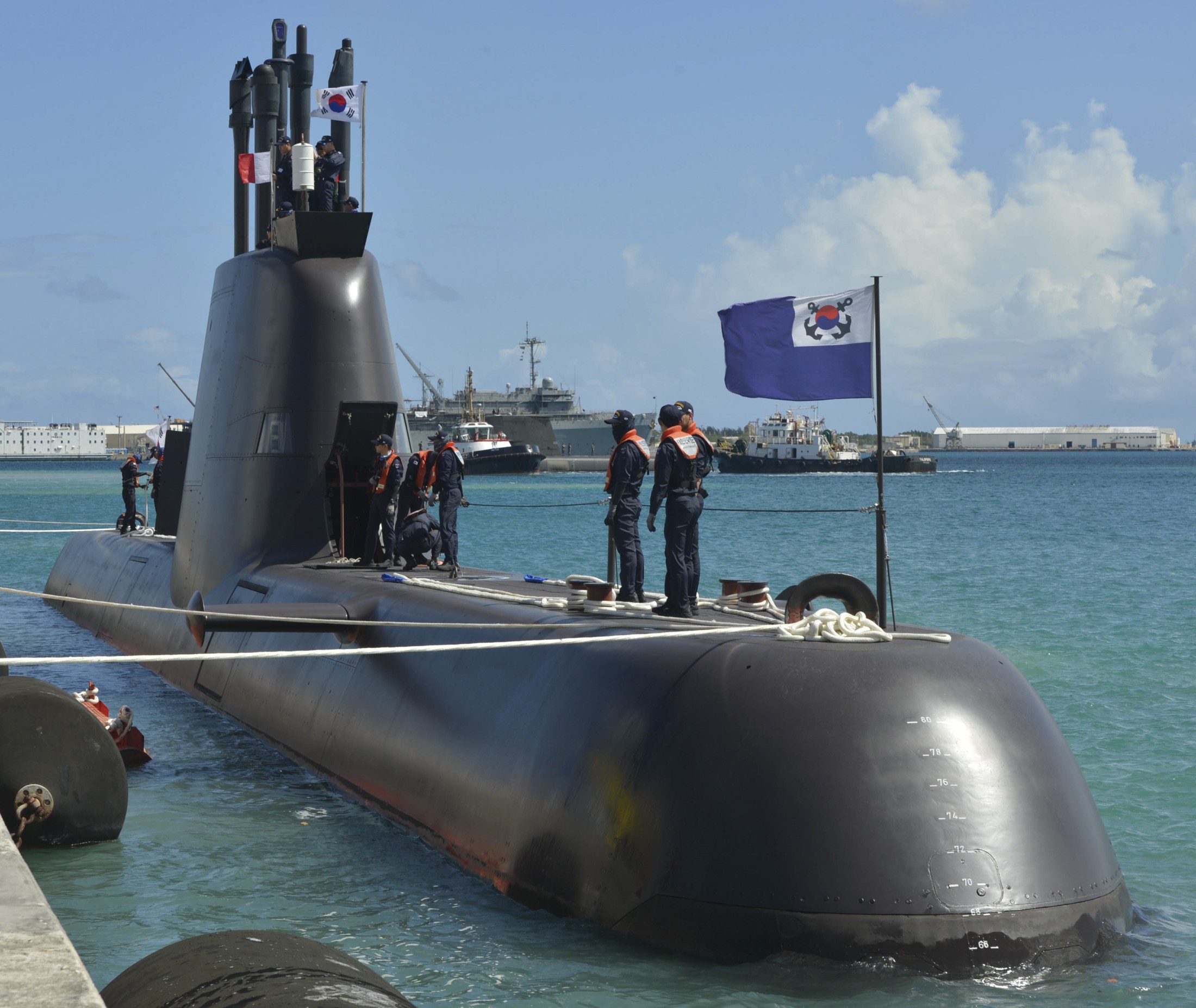Significant flaws have been found in South Korea’s Type 214 submarine fleet, just days after concerns about the reliability of the ROKAF (Republic of Korea Air Force) F-35A fighters appeared.
According to Rep. Shin Won-sik of the People Power Party, the Republic of Korea Navy (ROKN) has a fleet of nine Son Won-il class submarines, all of which have significant defects, reported Naval news.
The Son Won-il class submarines are based on Type 214, a diesel-electric submarine developed by Howaldtswerke-Deutsche Werft, a German shipbuilding firm. These submarines are regarded as one of the ROK Navy’s most vital assets, serving as a powerful deterrence to North Korean aggression.
Won-sik states that two of the Son Won-il class submarines had “functional” issues with the inverter modules, while the other seven had problems with the cables of the inverter modules. The propulsion system of each submarine is primarily composed of twelve modules.
This component is manufactured by Siemens, a German multinational conglomerate corporation. That being said, the latest development is predicted to have a detrimental impact on force preparedness.
Even worse, seven ROKN submarines have been deployed without the necessary fixes because the precise cause of the cable-related flaws is yet unknown. In Feb 2022, it was first reported that the ROK Navy discovered deficiencies in the cables of three submarines’ inverter modules.
According to Won-sik, the main concern is that the ROKN has continued to run the boats without determining the source of the problem, completely ignoring the issues with the propulsion system.
“Their claim that there are no issues contradicts the fact that they are trying to get the modules replaced. The ROKN top brass needs to figure out what is going on,” Won-sik added.
He went on to note that, considering that the cables have three layers of protection, the issue is “most probably” the result of the depolymerization of the outer coating rather than a structural flaw in the cable.
The Navy has had major operational challenges with the submarines. For instance, ROKS Jeong Ji, the class’ second ship, hasn’t been deployed since October 2019 owing to a cooling system leak that damaged the inverter module.
A contract worth roughly $5 million to repair the subs has already been given to Siemens. Each upgraded Type 214 submarine is anticipated to undergo a six-month repair operation, including the time required to transport the module to Germany.
Overall, the latest revelation by a South Korean lawmaker has confirmed that the situation is substantially bigger than initially believed.
Rep. Shin Won-sik recently disclosed that the South Korean F-35A aircraft were deemed operationally unready 234 times throughout 18 months due to malfunctions.
The ROKAF F-35s were grounded 172 times due to a poor availability rate brought on by malfunctions. On 62 other occasions, the F-35s could fly but were somehow constrained and unable to complete specific missions.

Based on this data, the lawmaker emphasized that the South Korean military should make a major effort to introduce and maintain such cutting-edge weaponry.
Son Won-il Class (Type 214)
The Son Won il-class is based on Type 214, a diesel-electric submarine produced by Howaldtswerke-Deutsche Werft, and was procured as part of the KSS-II program. The vessels were named after the ROKN’s first chief of naval operations, Admiral Son Won-il.
These submarines were an important milestone for the service due to their employment of air-independent propulsion technology. Hyundai Heavy Industries (HHI) constructed the first three of the nine submarines, and Daewoo Shipbuilding & Marine Engineering built the remaining six.
In 2007, the first ship was put into service. The ROKS Shin Dol-seok, the final ship in the class, was commissioned in 2020. The Type 214 can dive over 400 meters (1,300 ft) thanks to advancements in pressure hull materials.

The submarine can transport food, clean water, and fuel for 84 days of operation. The boat cruises with an open pulse fingerprint for ESM systems during surface operations, but during a covert mission, the operator shifts to LPI mode.
The submarine has diesel propulsion with an air-independent propulsion (AIP) system. It uses Siemens polymer electrolyte membrane (PEM) hydrogen fuel cells. The submarine class incorporates the Type 209 family’s design principles and elements of the Type 212A submarines.
- Contact the author at ashishmichel@gmail.com
- Follow EurAsian Times on Google News




